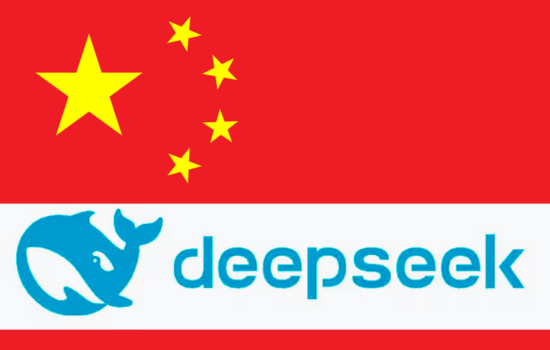China has once again set its sights on dominating the global artificial intelligence (AI) landscape with its latest innovation, DeepSeek-R1. This AI model, developed as a direct challenge to OpenAI’s dominance in the field, signifies a major technological breakthrough and highlights the country’s growing ambition to lead in cutting-edge technologies. With state-backed support and access to vast data resources, DeepSeek-R1 is positioned as a potential game-changer, igniting a fierce AI race between China and the West.
What Is DeepSeek-R1?
DeepSeek-R1 is China’s advanced AI model designed for tasks involving natural language processing (NLP), deep learning, and contextual understanding. Similar to OpenAI’s ChatGPT, the model excels in generating human-like responses, analyzing complex queries, and offering solutions in a wide array of domains, including healthcare, education, finance, and research.

However, what sets DeepSeek-R1 apart is its focus on multilingual capabilities, especially tailored for Asian languages, making it accessible to a broader audience in regions often underserved by Western AI tools. Moreover, it is built with a significant emphasis on high-speed processing and adaptive learning, enabling it to deliver accurate results while handling nuanced and diverse datasets.
A Strategic Push for AI Supremacy
DeepSeek-R1 is not just another AI model; it is a testament to China’s long-term vision to outpace the United States and its allies in the AI race. Backed by the Chinese government, this model is part of a larger strategy to integrate AI across industries, from manufacturing and logistics to education and military operations.
China has consistently been scaling up its AI research and development initiatives, with significant funding, regulatory support, and collaboration between government agencies, research institutions, and private companies. DeepSeek-R1 represents a convergence of these efforts, serving as both a technological innovation and a geopolitical statement.
The Chinese government has openly expressed its desire to lead in AI by 2030, with DeepSeek-R1 acting as a critical milestone in this journey. By creating a model capable of rivaling OpenAI’s ChatGPT, China is signaling its intent to challenge the West not just technologically but also economically and politically.
A Threat to Western Tech Giants?
DeepSeek-R1’s debut has raised alarm bells in Silicon Valley. Major players like OpenAI, Microsoft, Google, and Meta, who have long dominated the global AI ecosystem, are now facing competition from a rapidly advancing China.
One of the key advantages for DeepSeek-R1 is its access to vast and diverse datasets. Unlike Western companies, which face stringent data privacy regulations, China’s data policies allow its AI developers to access and process enormous amounts of data. This unrestricted access has allowed DeepSeek-R1 to train on datasets that are broader and more diverse, potentially giving it an edge in accuracy and adaptability.
Another unique feature of DeepSeek-R1 is its ability to cater specifically to non-English-speaking markets, particularly Asian languages. This focus could disrupt markets where Western AI tools, such as ChatGPT, have struggled to gain significant traction due to limited language support.
Challenges and Ethical Concerns
While DeepSeek-R1 showcases China’s technological prowess, it also raises significant ethical concerns. Critics argue that China’s AI models, including DeepSeek-R1, could be leveraged for state surveillance, censorship, and propaganda. Given China’s history of integrating AI into its authoritarian governance model, concerns over misuse are valid and pressing.
Additionally, questions about data privacy remain unanswered. While DeepSeek-R1 benefits from unrestricted access to data, this advantage comes at the cost of transparency and ethical considerations. Without stringent regulations governing how data is collected and used, there is potential for abuse, especially in sensitive sectors like healthcare and finance.
India’s Role in the AI Race
As China’s DeepSeek-R1 gains momentum, India must evaluate its position in the global AI landscape. With a booming digital economy and one of the largest pools of tech talent in the world, India is well-placed to make significant strides in AI development. However, a lack of large-scale funding and infrastructure has hindered its progress.
India can take this moment as an opportunity to strengthen its AI capabilities by increasing investments in research and fostering collaborations between government, academia, and the private sector. Developing indigenous AI models that cater to India’s diverse linguistic and cultural needs can help the country stay competitive while offering an ethical alternative to Chinese AI systems like DeepSeek-R1.
The Way Forward
DeepSeek-R1 represents more than just a technological achievement; it is a symbol of China’s determination to dominate the AI landscape and challenge the West’s technological hegemony. Its debut marks the beginning of a new chapter in the global AI race, one that could redefine how AI shapes economies, societies, and geopolitics.
For Western tech giants, the rise of DeepSeek-R1 is a wake-up call, pushing them to innovate faster and strengthen their positions in key markets. At the same time, it raises important questions about the ethical use of AI and the need for global regulations to prevent misuse.
As the world watches this AI rivalry unfold, one thing is certain: the race for AI supremacy is far from over, and the stakes have never been higher. DeepSeek-R1 has added a new dimension to this race, and its impact will likely reverberate across industries and borders in the years to come.

Hi, I am Kapil Kumar, founder and chief editor of indiasvibes.com, a platform delivering the latest updates on business, finance, entertainment, and sports. With a passion for insightful storytelling, I am and my team ensures our readers receive accurate and engaging content.

